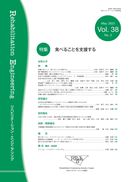Volume 38, Issue 2
Displaying 1-14 of 14 articles from this issue
- |<
- <
- 1
- >
- >|
-
2023Volume 38Issue 2 Pages 53
Published: May 01, 2023
Released on J-STAGE: May 25, 2023
Download PDF (781K) -
2023Volume 38Issue 2 Pages 54-57
Published: May 01, 2023
Released on J-STAGE: May 25, 2023
Download PDF (1031K) -
2023Volume 38Issue 2 Pages 58-61
Published: May 01, 2023
Released on J-STAGE: May 25, 2023
Download PDF (928K) -
2023Volume 38Issue 2 Pages 62-67
Published: May 01, 2023
Released on J-STAGE: May 25, 2023
Download PDF (3769K) -
2023Volume 38Issue 2 Pages 68-71
Published: May 01, 2023
Released on J-STAGE: May 25, 2023
Download PDF (1106K) -
2023Volume 38Issue 2 Pages 72-77
Published: May 01, 2023
Released on J-STAGE: May 25, 2023
Download PDF (2592K) -
2023Volume 38Issue 2 Pages 78-82
Published: May 01, 2023
Released on J-STAGE: May 25, 2023
Download PDF (1338K) -
2023Volume 38Issue 2 Pages 83-85
Published: May 01, 2023
Released on J-STAGE: May 25, 2023
Download PDF (788K) -
2023Volume 38Issue 2 Pages 86-89
Published: May 01, 2023
Released on J-STAGE: May 25, 2023
Download PDF (3096K) -
2023Volume 38Issue 2 Pages 90-94
Published: May 01, 2023
Released on J-STAGE: May 25, 2023
Download PDF (2058K)
-
2023Volume 38Issue 2 Pages 95-104
Published: May 01, 2023
Released on J-STAGE: May 25, 2023
Download PDF (1983K) -
2023Volume 38Issue 2 Pages 105-113
Published: May 01, 2023
Released on J-STAGE: May 25, 2023
Download PDF (1970K)
-
2023Volume 38Issue 2 Pages 114-124
Published: May 01, 2023
Released on J-STAGE: May 25, 2023
Download PDF (1632K)
-
2023Volume 38Issue 2 Pages 125-130
Published: May 01, 2023
Released on J-STAGE: May 25, 2023
Download PDF (1038K)
- |<
- <
- 1
- >
- >|
